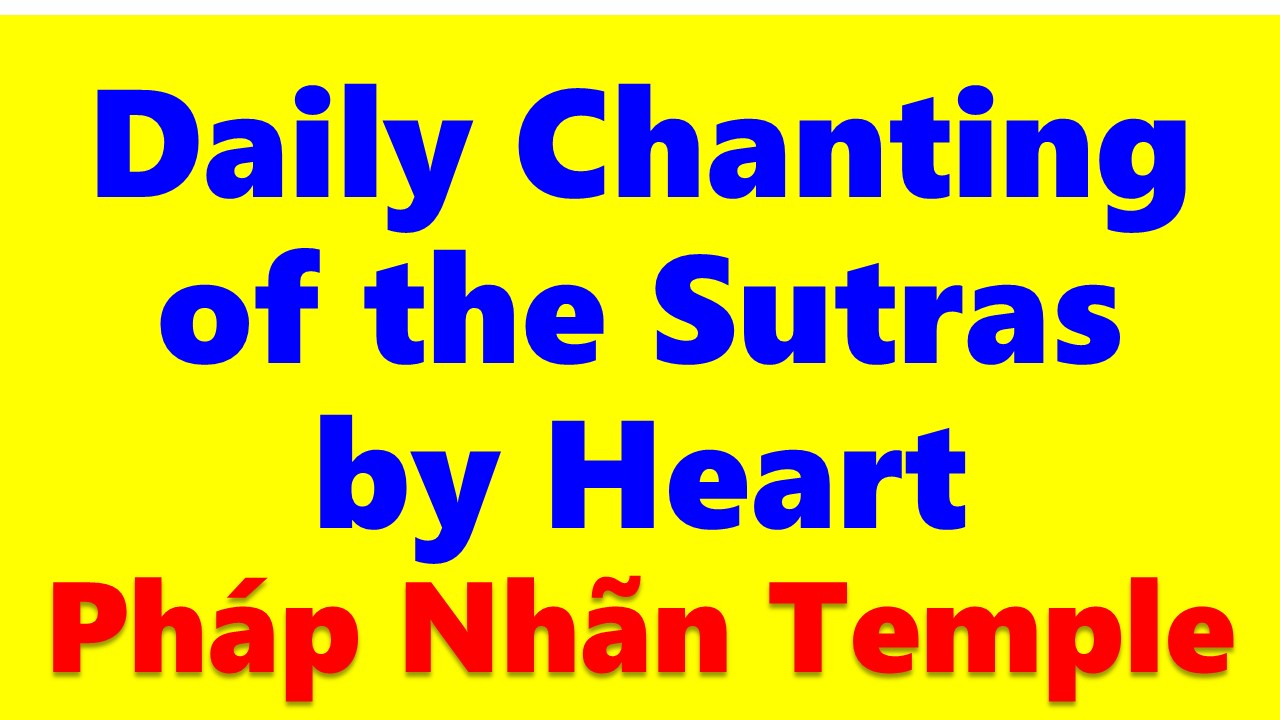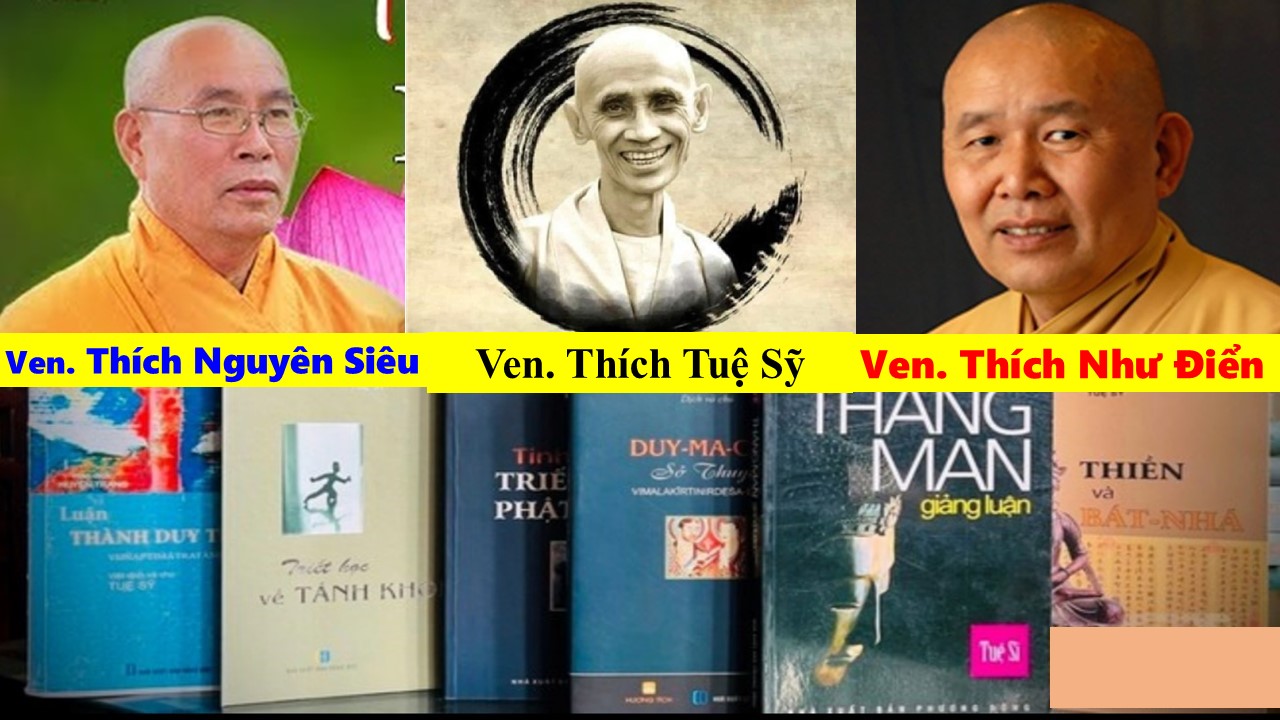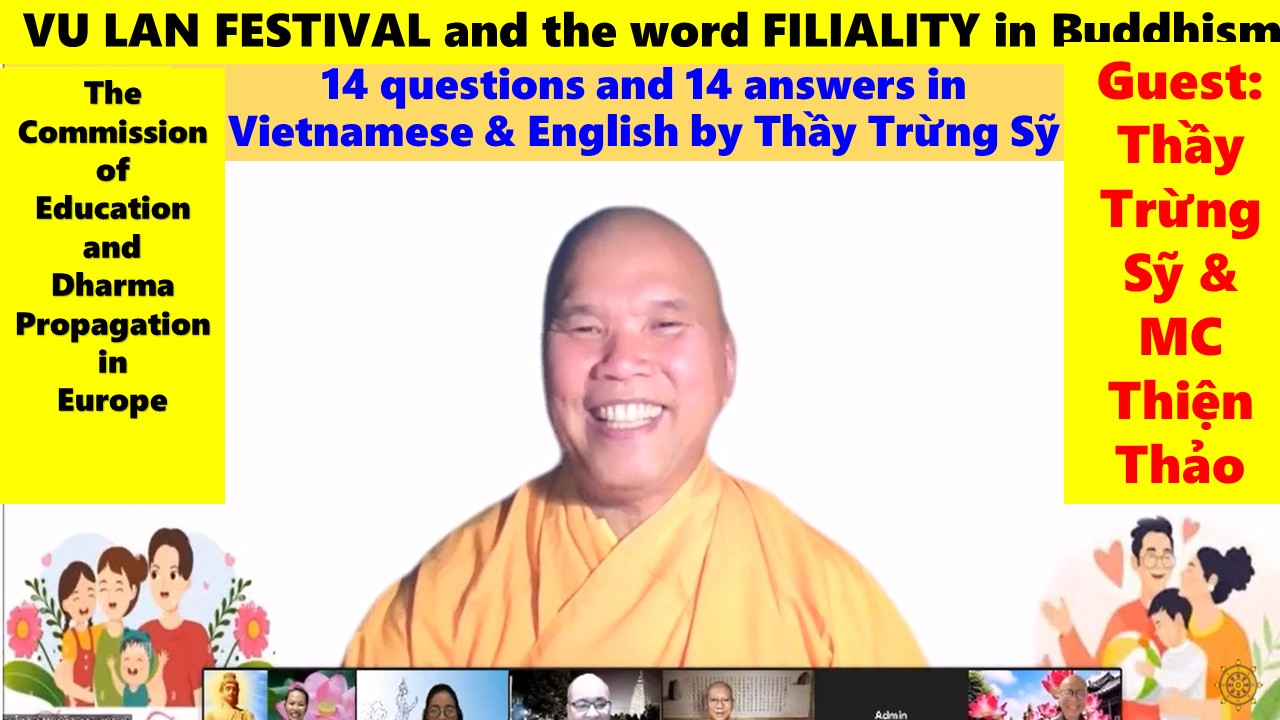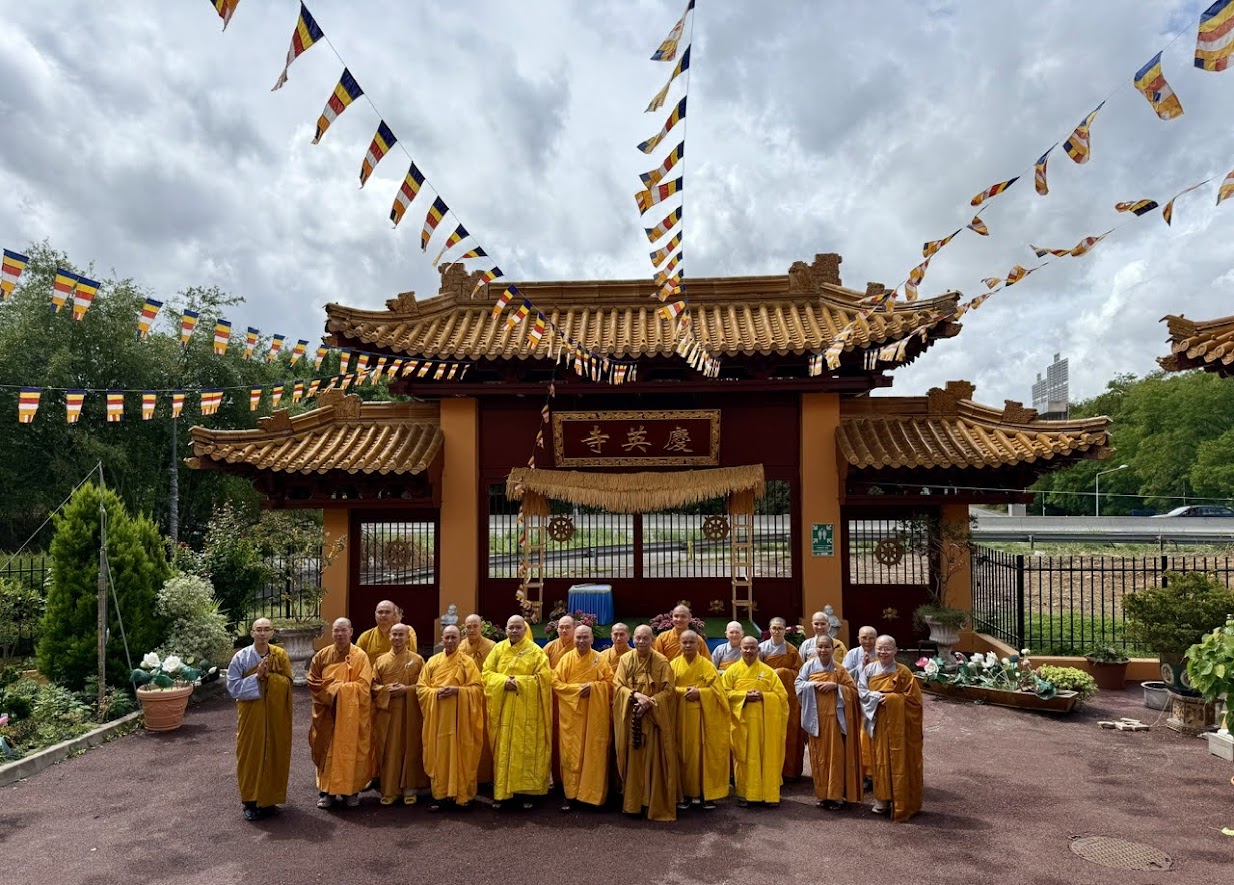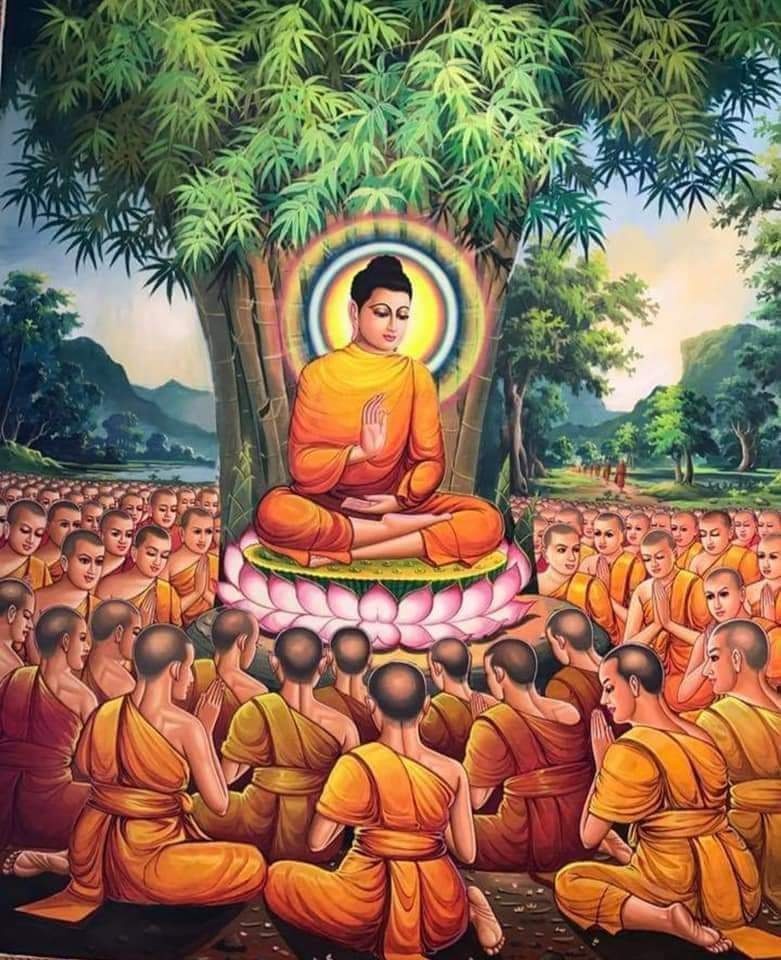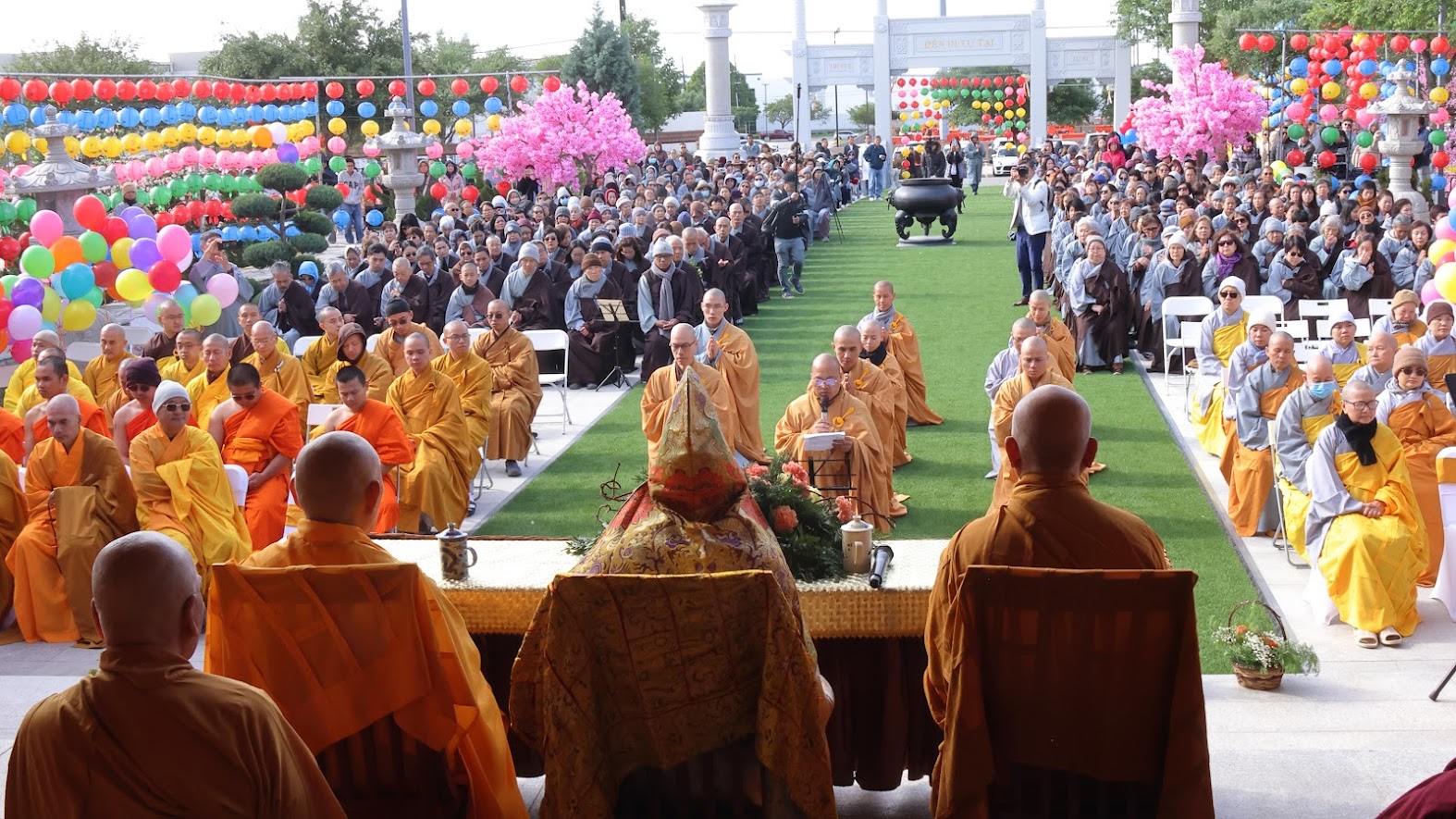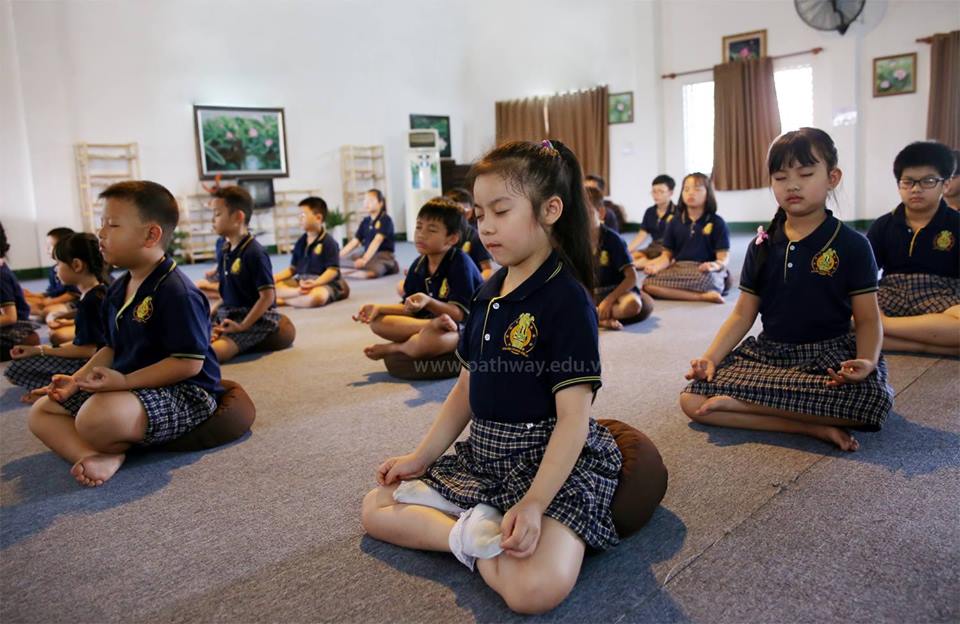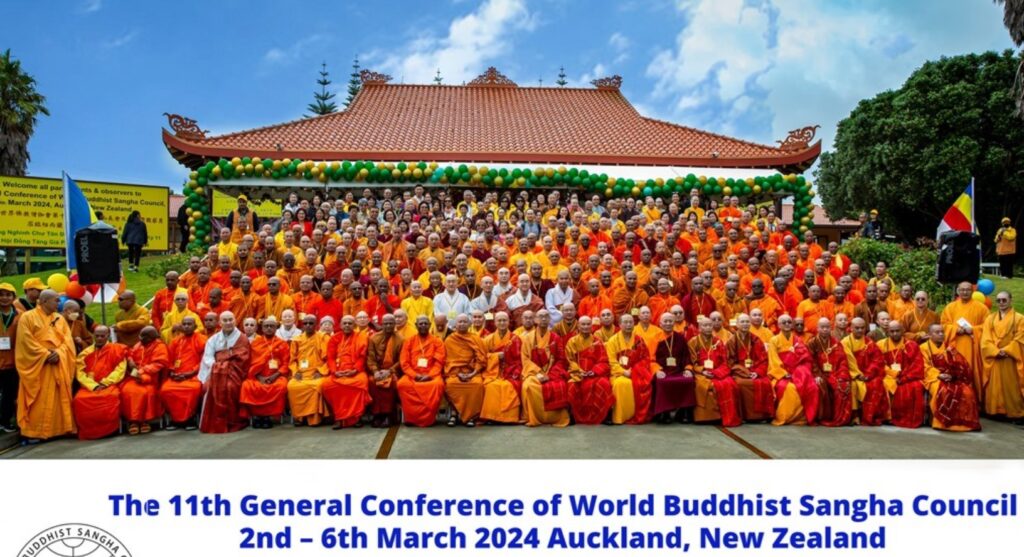
More Than Half a Century of the World Buddhist Sangha Council
Most Venerable Thích Như Điển
Since the day the Buddha Shakyamuni attained enlightenment beneath the Bodhi Tree at Gaya, India, more than 2,660 years of history have passed. The radiant light of His compassion and wisdom has inspired countless followers—from Asia to Europe, from Europe to America, Australia, and even to Africa. This enduring influence demonstrates that the Dharma realized by the Buddha under the Bodhi Tree remains universally relevant—adaptable to all peoples, all times, and all places on this Earth.
In the earliest days, the Buddha first guided the five ascetics led by Ajnata Kaundinya to enlightenment, followed by Yasa and forty-nine other monks at Varanasi, on the banks of the River Ganges, making a total of fifty-five disciples. The Buddha’s first message addressed to the Bhikshus was: “Each of you should travel in a different direction to share and teach the Dharma you have learned!”. This message, simple yet profound, retains its timeless significance even today.
The Sangha consists of ordained members, including both Buddhist monks (Bhikkhus) and nuns (Bhikkhunīs), who were established first. Later came the community of lay disciples. The Buddha also encouraged that monastic people have the duty to propagate the Dharma and benefit sentient beings, while lay followers have the responsibility to support and protect the Triple Gem. These two communities work together in harmony to uphold and sustain the existence and development of the Triple Gem in this world.
After Buddhism took root in India, the teachings of the Buddha were transmitted to other Asian countries by monks and nuns along both the Southern and Northern traditions. As a result, Mahayana and Theravada Buddhism established themselves in these regions. From there, the light of wisdom gradually spread to other continents, sustained by the dedicated practice, study, and conduct of the monastics, as well as the devotion and effort of lay Buddhists.
Monastics live without personal families, preserving the original lineage established during the Buddha’s lifetime, while lay practitioners live within families, maintaining their ancestral traditions and supporting the Three Jewels. Thus, wherever Buddhism spreads, both the monastic and lay dimensions are fully present, ensuring the continuous transmission of the Buddha’s teachings to all people and places, just as he initially conveyed in his Message to the fifty-five Bhikshus.
In every Buddhist country, both monastic and lay communities exist. In some, Buddhism became the state religion; yet until the mid-20th century, no global organization existed to unite monastics – or, more precisely, the worldwide monastic community. In 1966, in Colombo, Sri Lanka, the first World Buddhist Sangha Council was convened. Elder monks from across the globe gathered to establish the World Buddhist Sangha Council (WBSC). From Taiwan came Most Venerable Elder Bai Sheng and Wu Ming; from Hong Kong, Most Venerable Elder Jue Kuang; and from Vietnam, Most Venerable Elder Tam Chau. These Most Venerable Elders became the founding members of the World Buddhist Sangha Council. In 1969, the second World Buddhist Sangha Council was held at Vinh Nghiem Pagoda in Saigon, representing a great honor for Vietnamese Buddhists.
In the years that followed, many Buddhist countries successively hosted WBSC Executive Council Meetings and General Assemblies. To date, approximately twenty nations have held such gatherings, including Taiwan, Hong Kong, Singapore, Malaysia, Indonesia, Sri Lanka, Vietnam, Korea, Macao, and China—and extending farther to Australia, New Zealand, the United States, Canada, and Germany.
Buddhism in Germany was established roughly a century ago. In the early days, however, monks, nuns, and lay Buddhists participated together within a single organization called the ‘Deutsche Buddhistische Union’ (DBU). It was not until later—specifically, between 1977 and 2000, during my personal presence in Germany— that I proposed separating the monastic community from the lay community into two distinct organizations.
Today, visitors from abroad can observe that this organizational structure has been in place for about thirty years, under the name ‘Deutsche Buddhistische Ordensgemeinschaft’ (DBO). This faithfully reflects the spirit of the Buddha’s original teachings. It is a result that is both noteworthy and encouraging for Buddhism in Germany today.
Over the past six decades, the World Buddhist Sangha Council has continued to grow and evolve under the leadership of its successive presidents: Most Venerable Elders Bai Sheng, Wu Ming, and Liao Chung. The current term is led by Most Venerable Elder Huei Hung. It is my heartfelt wish that Buddhism continues to reach ever more people across the globe, and that the World Buddhist Sangha Council’s activities receive increasing support and collaboration under the guidance of its Presidents, Vice Presidents, Secretaries (in both Chinese and English), and Executive Committee members representing more than thirty countries.
May peace prevail throughout the world,
and may all sentient beings live in happiness and harmony.
https://phapnhan.org/tv/hon-nua-the-ky-cua-hoi-dong-tang-gia-the-gioi/



